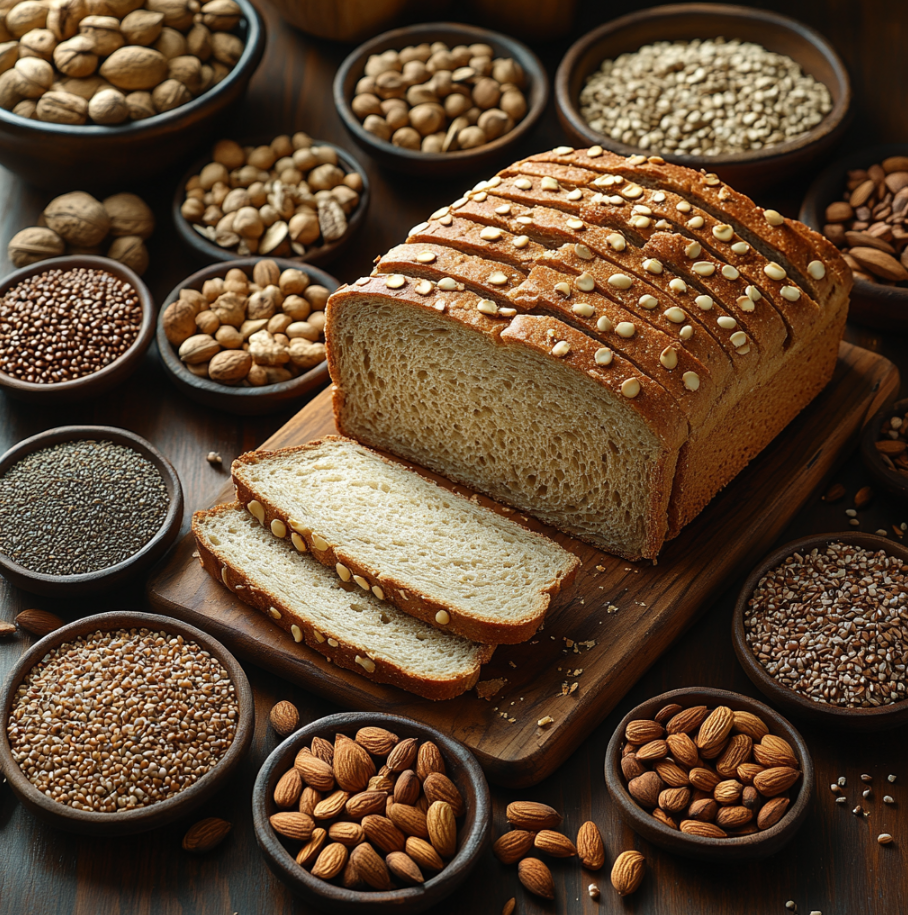Sourdough bread is made using a natural fermentation process that uses wild yeast and lactic acid bacteria. This process can take several hours or even days, producing its characteristic tangy flavor and chewy texture. In contrast, regular bread relies on commercial yeast for a quicker rise.
The slow fermentation process not only impacts taste but also enhances the nutritional value of sourdough. According to Healthline, the fermentation of sourdough breaks down phytic acid, which can inhibit the absorption of key nutrients in regular bread.
Nutritional Benefits of Sourdough
One of the standout features of sourdough is its enhanced nutritional profile compared to regular bread:
- Higher fiber content, especially when made from whole grains.
- Rich in B vitamins, magnesium, iron, and zinc due to the fermentation process.
- Lower glycemic index, which means it causes a slower rise in blood sugar, beneficial for those managing diabetes.
The lower glycemic index of sourdough makes it a preferable choice for people seeking better blood sugar control. Cleveland Clinic suggests that sourdough’s lower impact on insulin levels sets it apart from standard white bread.

Sourdough vs. Regular Bread: A Detailed Comparison
Let’s look at the key differences between sourdough and regular bread:
- Gut Health: Sourdough fermentation produces lactic acid, which acts as a prebiotic and promotes a healthy gut microbiome.
- Gluten Sensitivity: While sourdough isn’t gluten-free, the fermentation process breaks down a significant portion of gluten, making it easier to digest for individuals with mild gluten sensitivities. Check out this sourdough bread recipe if you’re interested in making it at home.
Health Benefits of Sourdough
- Better Digestion: The fermentation process breaks down anti-nutrients like phytic acid, making sourdough easier to digest than regular bread.
- Nutrient Absorption: Phytic acid reduction means more nutrients like calcium and magnesium are available for absorption.
- Weight Management: The combination of lower glycemic index and higher fiber can support better weight management.

Downsides of Regular Bread
Regular bread, especially white bread, tends to have:
- Higher glycemic index, which can lead to rapid blood sugar spikes.
- Additives and preservatives, which are often present in commercial bread for longer shelf life.
If you’re looking for ways to explore healthier bread options, consider trying artisan breads. For a deeper dive into artisan baking, you can check out this article on what makes artisan bread different.

Can Sourdough Help with Gluten Sensitivity?
Though sourdough bread is not entirely gluten-free, its fermentation process breaks down some of the gluten. This makes it potentially more tolerable for individuals with mild gluten sensitivities. However, it is not suitable for those with celiac disease. For an alternative, you could try recipes like coconut cookies or other gluten-free options.
Conclusion: Is Sourdough Healthier?
In conclusion, sourdough bread offers several advantages over regular bread. It’s more nutrient-dense, easier to digest, and may even benefit blood sugar control. However, individual preferences and dietary needs should guide the decision. If you’re seeking a healthier bread option, sourdough is a strong contender

